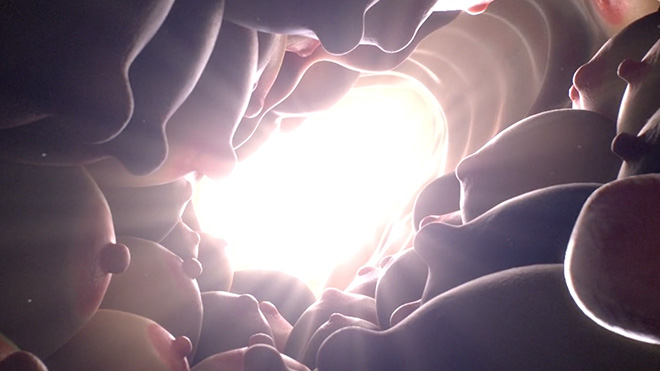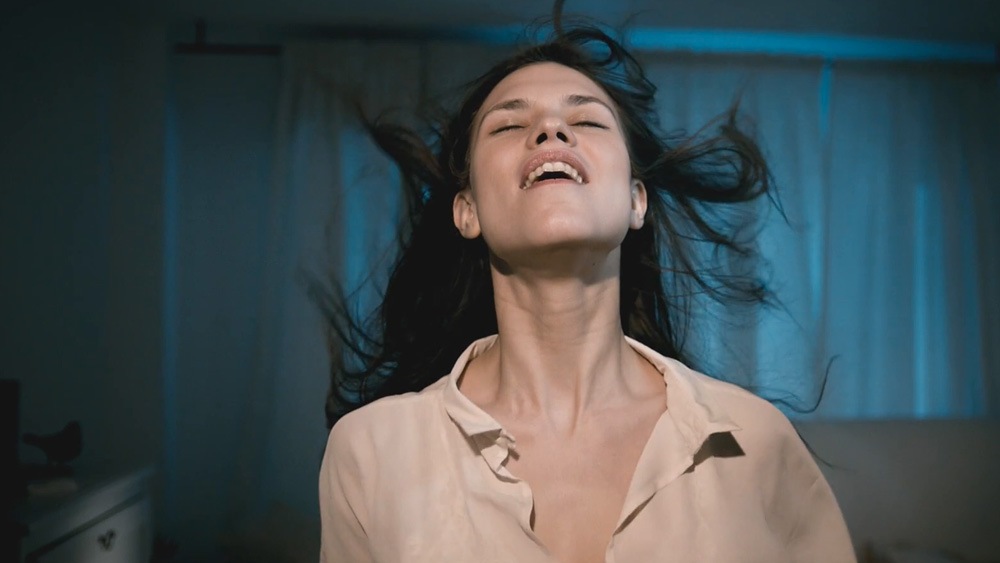A young man travels to Costa Rica, chasing the woman he fell in love with. He finds her wearing a mysterious gray mask and unwilling to return. Can he convince her?
What we loved the most about ‘Pura Vida’ was how it came about, and developed into a film. Director Chris Shimojima had a lot to tell us about, and we figured there would no better way to present his film:
I had worked with lead actor David Melissaratos before, and we wanted to do something again. I told him about this dream, in which I pursue a love interest without a face, across several landscapes. It wasn’t necessarily Costa Rica — I had no idea what Costa Rica really looked like. But David and I wanted to take a vacation there, so we thought this was the perfect opportunity. I always woke up before the dream reached a certain point, and it was frustrating not knowing the ending, especially for a narrative filmmaker. So the plan was to make it into a film, with an ending, in the hopes of healing something in myself. There are certain themes in my life that I’ve always had to deal with. Here, it became apparent that this was a story about learning when to stop, learning when to let go, and how, if you keep on going, you’re just going to end up burning yourself and ruining the beauty that comes from not knowing… but at the same, you have to know.
But in a more practical way, the goal was to try to reclaim the spirit of being “independent”. I travel frequently, and I try to bring a DSLR to shoot video, because it forces me to look around more. Sometimes I feel like projects get increasingly expensive and more rigid, which if you’re not careful, can mean killing the sense of fun. As a kid, it’s the issue I always feared: how would I ever get to create something, if I had to deal with so many people telling me what I couldn’t do, what they couldn’t do, when they couldn’t do it, why I’d have to wait and wait and wait? But when digital filmmaking really boomed, I suddenly felt like I could start to make things at the quick and inspired pace that I preferred. Having a minimal team on this project meant that we could go out and just do it. And that’s why it’s also important to work with people who have a can-do attitude.
David and I found Anita, who was willing to come on this trip. She didn’t know us, but after reading our post, she said she was able to tell we weren’t creeps, thankfully. We had a loose structure, which we talked about it in depth, but no solid script. A lot was improvised, and for other parts, I was writing the lines during bus rides. It was exhausting. As we walked around, I had the camera around my neck, the lenses in my backpack, and the wireless receivers in a pouch around my waist. We would shoot whenever we weren’t ziplining, canyoneering, or riding ATV’s. I would have included some of that in the film, but it ultimately didn’t fit… and we also lost our GoPro. It was the beginning of rainy season, and it was pouring when we went vine-swinging into a river. The GoPro slipped off, and the current was too rough to find it.
We love dreams and especially love when people try to recreate them. Shimojima did an amazing job of bringing his dream to a screen, while maintaining some of the nonsense usually found in dreams. Even though his dream didn’t occur in Costa Rica, it served the film wonders as it kept a dreamlike feel throughout and as if it was bringing back bits and pieces of a memorable vacation.
Chris Shimojima is a writer/director and video editor based in NYC. He’s currently developing a feature film, a sci-fi romantic drama that will attempt to give you the feeling of falling under a spell, just as the characters fall under the spell of a new black market drug. Please get in touch if you want to help make it happen in some way.




